The time for talking, thankfully, is almost over (though, is it really ever over?). To paraphrase Triple H, it’s time to play the games.
This is going to be one of the most interesting seasons of the Sidney Crosby/Evgeni Malkin/Kris Letang era in Pittsburgh. Yes, far more than many seasons that came before it, as everyone is a year older, hopefully another year wiser, and we see just how open the Pittsburgh Penguins’ Stanley Cup window remains.
The fearless George Majchrzak is going to be previewing the Penguins’ revamped defense and goaltending, so today, we’ll focus on the forwards.
It’s a much-improved 1-12 this year, especially in the bottom-six, and double-especially with some bounce-back years expected from a handful of players.
Fourth Line
| Left Wing | Center | Right Wing |
| Drew O’Connor | Radim Zohorna | Rem Pitlick |
Admit it, you saw we were starting with the fourth line and thought that it wouldn’t be interesting and that we should be starting with the power. As with many things on this Penguins team this year, the bottom-six is far from boring.
If you’ve read any of my previous articles or had the chance to watch the Penguins’ season preview on our YouTube channel, you will be well-versed in my fandom of Radim Zohorna. At 6-foot-6, 220 pounds, he’s a fast skater for his size and more than fast enough to play in the NHL. He hits like a Mack truck, has decent hands, and can handle the puck well enough. At 27 years of age, this is his time. A good coach will ensure he keeps it simple, plays an effective game, banging and bruising on whatever line he’s matched up against, and cycling the puck down low to keep possession.
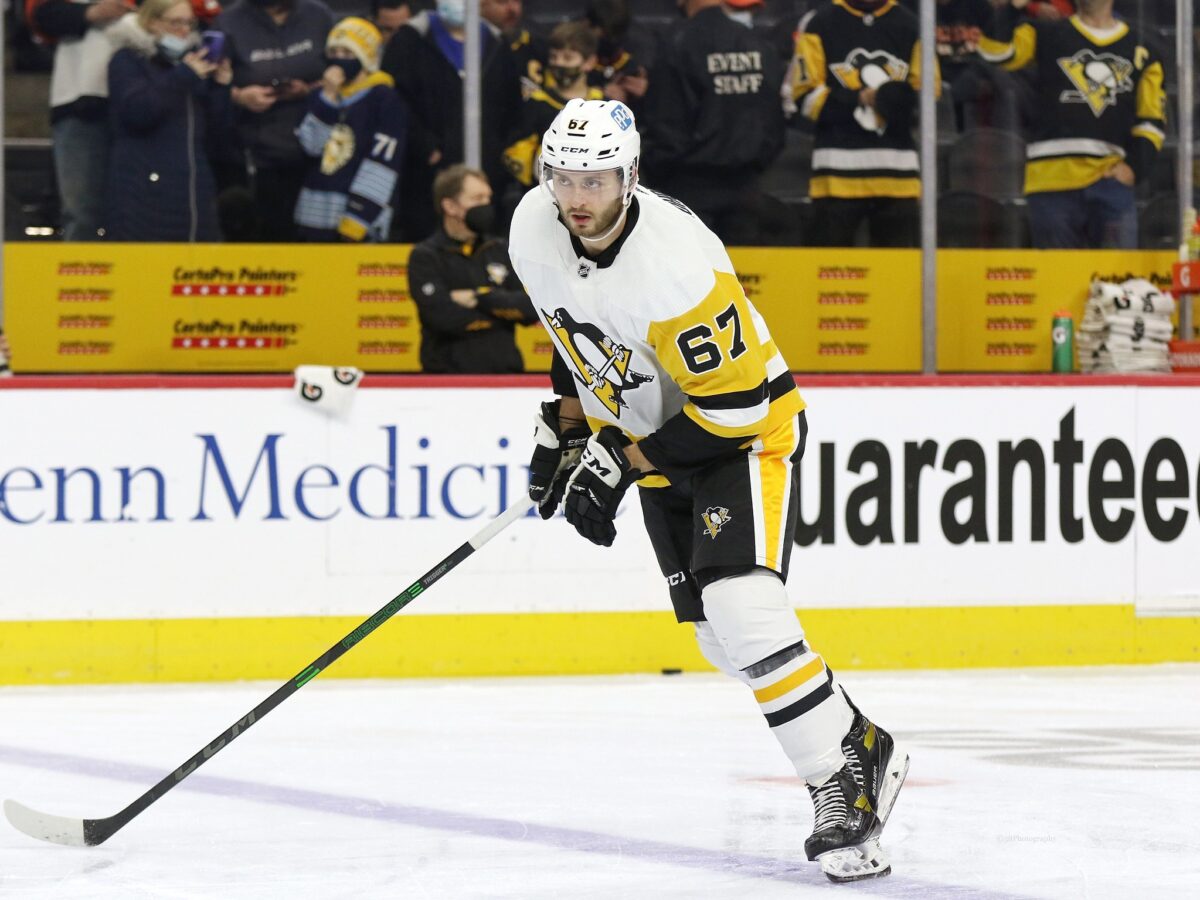
Zohorna is everything that Drew O’Connor should be aiming to be. The star of the past two training camps, O’Connor needs to translate his abilities into the regular season. To do so, he needs confidence to believe that he can execute in the regular season the way he does in training camp. If so, O’Connor will bring a strong forechecking presence, speed, and enough hands to score double-digit goals and more than 20 points. He’s also a natural center, so perhaps playing the wing is why he’s had trouble adjusting to the NHL. Switch O’Connor and Zohorna, and it doesn’t matter as long as whoever’s in the middle is defensively responsible and can win 50 percent (ideally 53 percent) of their faceoffs.
As this line features multiple hot takes, the second one is Rem Pitlick on the right flank. Pitlick is pure offense, someone who puts up points like a low-end second-liner. I’ve got him over two players you’ll see in a moment because he should be at his offensive peak and should be motivated enough to stay in the NHL to learn how to play more of a consistent two-way game. You’ve got to think the difference in paycheque size is worth a little more defensive effort.
All three of these players have at least some offensive skills in their game, and both Zohorna and O’Connor can bring the noise with their physical presence. We all know this won’t be their fourth line on opening night. But that doesn’t mean it isn’t the Penguins’ best option. If this line came together, it could be a vastly underrated unit that shocks the league.
Notable by His Absence
Alexander Nylander: Nylander is not yet at his peak. Watching him play last year, I saw someone who has skill but too often stays on the perimeter, not making an impact either offensively or defensively. If he flips a switch this summer and in training camp, then he has the potential to be a legitimate top-six player. Unless that happens, he is a potential waiver wire guy at the end of camp.
Related: Pittsburgh Penguins Training Camp Roster: What to Watch For
The only caveat here is that Nylander costs less than Pitlick, so if it’s a cap situation (such as when Jake Guentzel comes off injured reserve), Nylander could make the team over Pitlick purely for that reason.
Interestingly enough, both Nylander and Zohorna are making a strong impression early in camp.
Third Line
| Left Wing | Center | Right Wing |
| Matt Nieto | Lars Eller | Noel Acciari |
Noel Acciari is the kind of third/fourth-line winger that a Stanley Cup winner has. Fast, fearless, grinds opposing defensemen into the boards, scores gritty goals in tight. As this team has a singular goal in mind, that distinguishing feature is always vital to keep in mind.
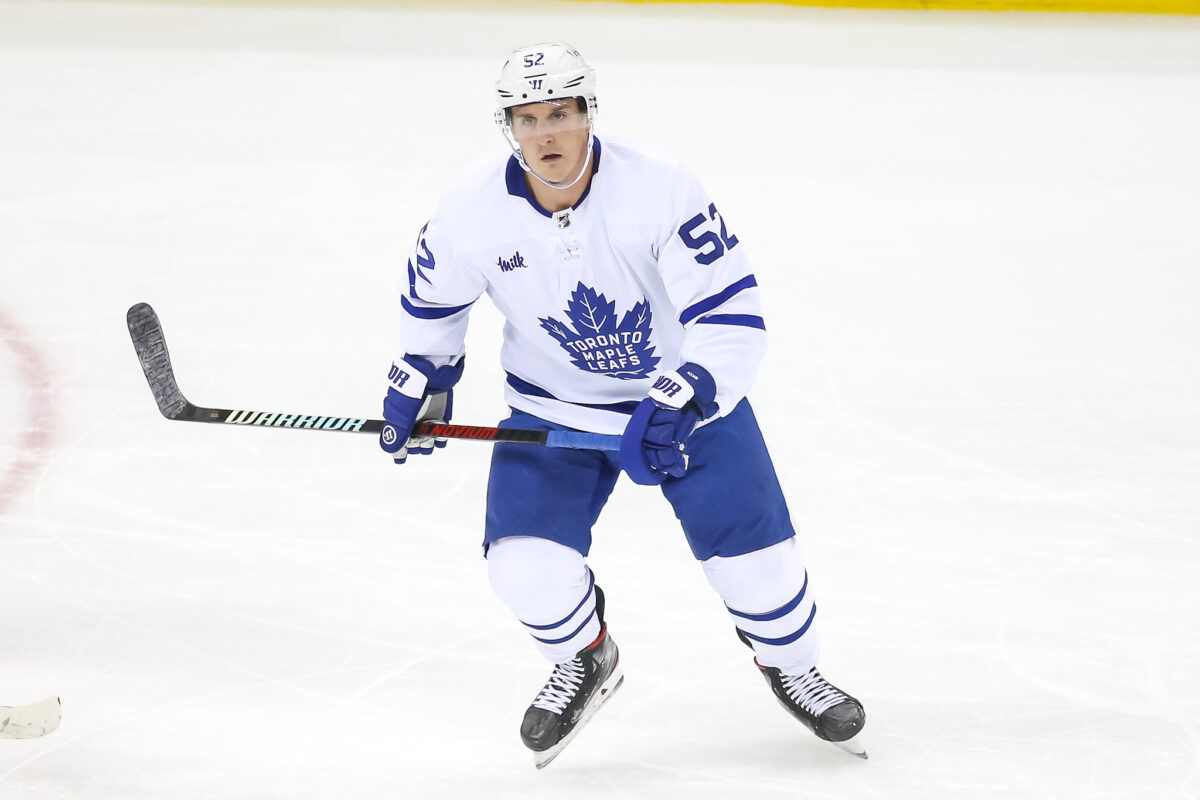
Now, what about the other two?
Matt Nieto is a true 12th forward/replacement player at this point, so this placement in the lineup is as much about Pittsburgh’s left-wing depth as anything else. Lars Eller is a highly intelligent player who, at 34, gets a little slower every year. His continued loss of foot speed and drive from his legs chips away a little from both his offensive and defensive abilities each season. As I stated previously this summer, Eller is best suited for a fourth-line center role, or for that matter, a third-line winger spot. As a team with Stanley Cup aspirations, the Penguins simply will not win with Eller in his current role.
Notable by His Absence
Jeff Carter: From my season review scouting report: “Carter’s main issue is his foot speed. There is none. His NHL ’24 ranking for skating should be about 17. And honestly, he looks old; I mean his face, he looks tired. By comparison, it’s not the same look that Patrick Marleau had at the same age, and Joe Thornton only had that look at the very, very end. Offensive instincts notwithstanding, I expect Carter’s tank to run empty after game 41 this season.”
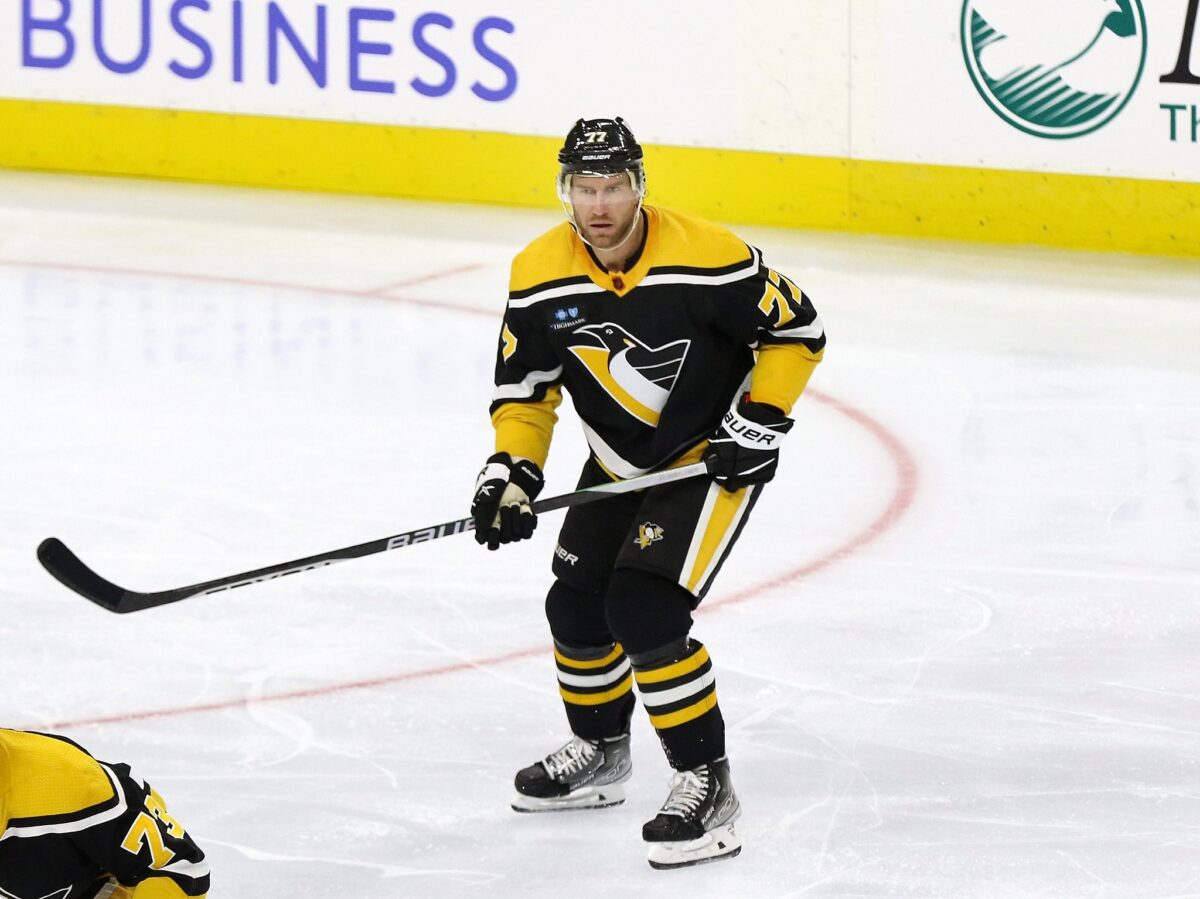
Carter is still effective on the power play. However, Europe is full of players with no footspeed who have vision and can finish. He’s had an outstanding career and likely brings a lot to the dressing room. It would take an awful training camp to keep him out of the lineup due to his name, salary, and still in-tact offensive instincts. However, unless Carter spent the summer training in the fountain of youth, I think this season is the end for him.
Keep an Eye on
Andreas Johnsson: Once the left wing for Auston Matthews, Johnsson’s story has had peaks as a 2013 seventh-round draft pick who developed, and more recently, its valleys. At his peak, Johnsson was an above-average straight-line skater whose speed and tenaciousness on the forecheck and in deep allowed him to pressure opposing defensemen into giveaways, leading to scoring opportunities for Auston Matthews and Mitch Marner.
Johnsson also had good enough hands to put away his share of goals, peaking at 20 goals in 73 games in 2018-19. But near the end of his Toronto tenure, his wheels disappeared, which took away the rest of his game. If he’s gotten them back, and he’s still young enough, turning 29 in November, then he could be a legitimate upgrade on Nieto, O’Connor, and Carter.
Second Line
| Left Wing | Center | Right Wing |
| Reilly Smith | Evgeni Malkin | Rickard Rakell |
Pittsburgh’s second line is better than some team’s first lines, and certainly far more complete. You have the aging superstar who’s still worth a point per game in Evgeni Malkin, a true offensive savant who’s incredibly dangerous in clutch situations. You’ve got the new guy, Reilly Smith, coming off his turn on the defending Stanley Cup champions in Vegas, bringing a true 200-foot game. He’s full of solid offense, is a defensive presence, and has enough guile to have hockey people screaming “glue guy” at every turn.
Finally, you’ve got Rickard Rakell, someone who has the ability to have a career year this season as long as the coaching staff keeps putting him in the right place and he gels with Erik Karlsson. Rakell has a wicked release on his snapshot, a great short-one-timer, can score from anywhere 30 feet and in, and will be one of the keys to Pittsburgh’s season.
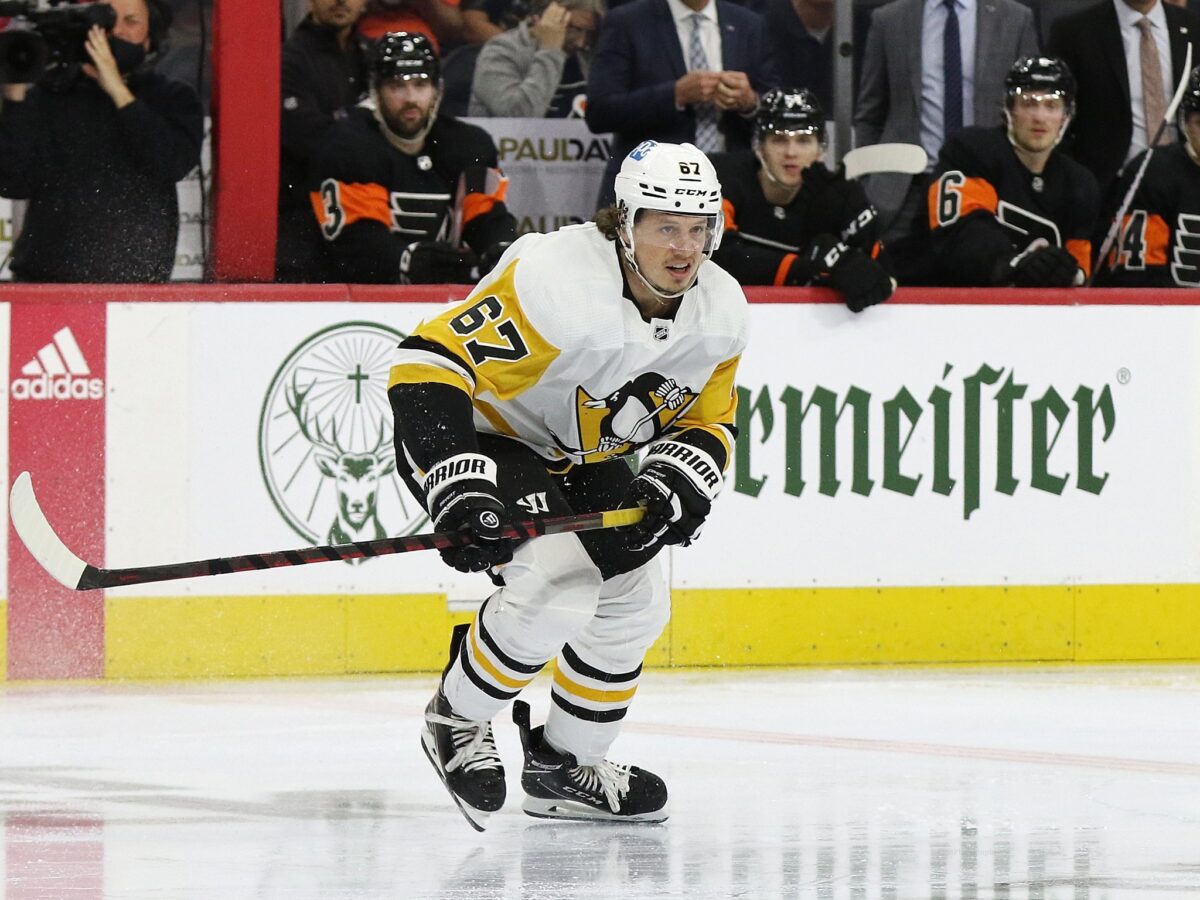
How well this line gels, both with Smith up front and Karlsson on the back end, will define how close this team is to being a playoff contender.
First Line
| Left Wing | Center | Right Wing |
| Jake Guentzel | Sidney Crosby | Bryan Rust |
It’s not the best first line in hockey, though it’s far from the worst.
Despite the ankle injury keeping him out of the season’s first (at least) five games, Jake Guentzel will be one of the most motivated players on the Penguins, which is saying something considering how last season ended. In the final year of a five-year, $30 million contract, he’ll be an unrestricted free agent next summer. He’s already earned life-changing money for himself and his family, but this is the time when he’ll have the chance to earn multi-generational wealth and likely pick his best chance to make money or win. Guentzel was solid last year, not playing his best (most on Pittsburgh did not). Expect a career year that has him asking (though not necessarily receiving) in the $9 million x 8-year range next summer.
From this vantage point, the key to this line is Bryan Rust. Lines can have more than one engine, and this unit runs better when Rust brings a full-on V10 to this group. While I do think that he has a fair number of miles on his body, I don’t think he’s done. The wheels are still there, and the motivation is certainly present. He needs to not worry about the contract that he earned and simply go out and enjoy playing with two incredible players and do what he does best. If Rust does this, then you’ll see guys like Guentzel and Kris Letang have excellent seasons. Not to mention…
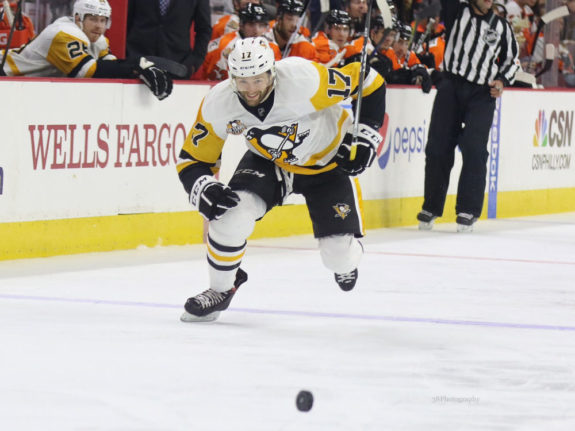
At this point, I strongly feel that Sidney Crosby is underrated and taken for granted by the hockey world, in much the same way that Wayne Gretzky was in his later years in the league. Crosby is one of those guys who’s always worked best with a chip on his shoulder, be it real or imagined for the sake of motivation. The talk this summer is that he was far from happy with how last season ended, so his motivation coming into 2023-24 is as real as it gets.
Crosby knows that his Cup window is closing and, that based simply on the math (ages), this year is Pittsburgh’s best chance to win with this core. Regardless of whether he puts up 100 points, expect a world-class season from one of the best five to seven players in history as he attempts to lead the Penguins back to the silver chalice.
George will be by this week with a look at the defense and goaltending situation. With this being Kyle Dubas’ first year and the expectations so high, the Steel City will have plenty to talk about this season.
